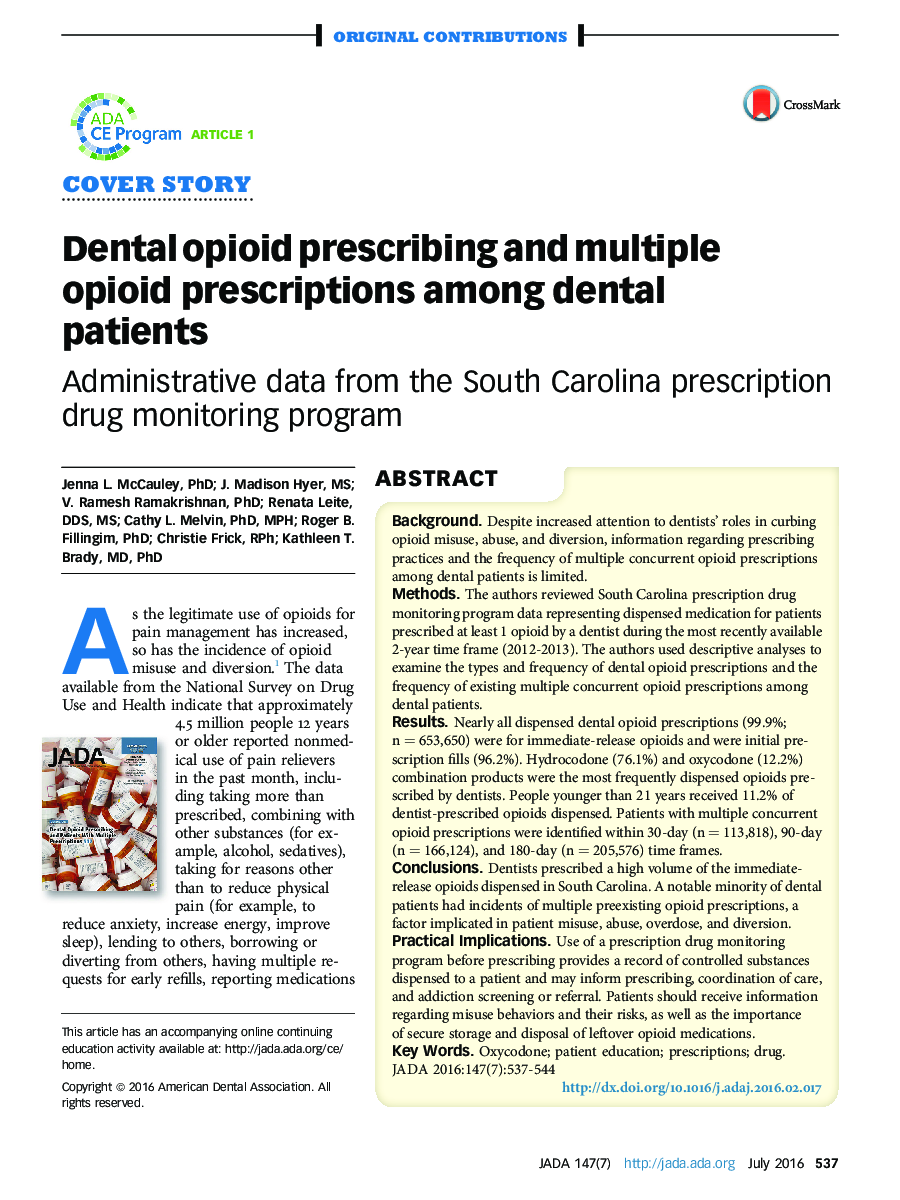| کد مقاله | کد نشریه | سال انتشار | مقاله انگلیسی | نسخه تمام متن |
|---|---|---|---|---|
| 3136334 | 1584964 | 2016 | 8 صفحه PDF | دانلود رایگان |
BackgroundDespite increased attention to dentists’ roles in curbing opioid misuse, abuse, and diversion, information regarding prescribing practices and the frequency of multiple concurrent opioid prescriptions among dental patients is limited.MethodsThe authors reviewed South Carolina prescription drug monitoring program data representing dispensed medication for patients prescribed at least 1 opioid by a dentist during the most recently available 2-year time frame (2012-2013). The authors used descriptive analyses to examine the types and frequency of dental opioid prescriptions and the frequency of existing multiple concurrent opioid prescriptions among dental patients.ResultsNearly all dispensed dental opioid prescriptions (99.9%; n = 653,650) were for immediate-release opioids and were initial prescription fills (96.2%). Hydrocodone (76.1%) and oxycodone (12.2%) combination products were the most frequently dispensed opioids prescribed by dentists. People younger than 21 years received 11.2% of dentist-prescribed opioids dispensed. Patients with multiple concurrent opioid prescriptions were identified within 30-day (n = 113,818), 90-day (n = 166,124), and 180-day (n = 205,576) time frames.ConclusionsDentists prescribed a high volume of the immediate-release opioids dispensed in South Carolina. A notable minority of dental patients had incidents of multiple preexisting opioid prescriptions, a factor implicated in patient misuse, abuse, overdose, and diversion.Practical ImplicationsUse of a prescription drug monitoring program before prescribing provides a record of controlled substances dispensed to a patient and may inform prescribing, coordination of care, and addiction screening or referral. Patients should receive information regarding misuse behaviors and their risks, as well as the importance of secure storage and disposal of leftover opioid medications.
Journal: The Journal of the American Dental Association - Volume 147, Issue 7, July 2016, Pages 537–544
